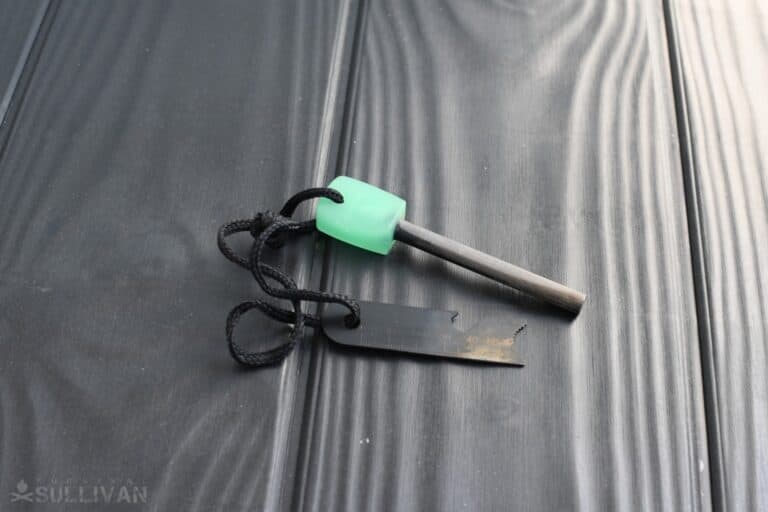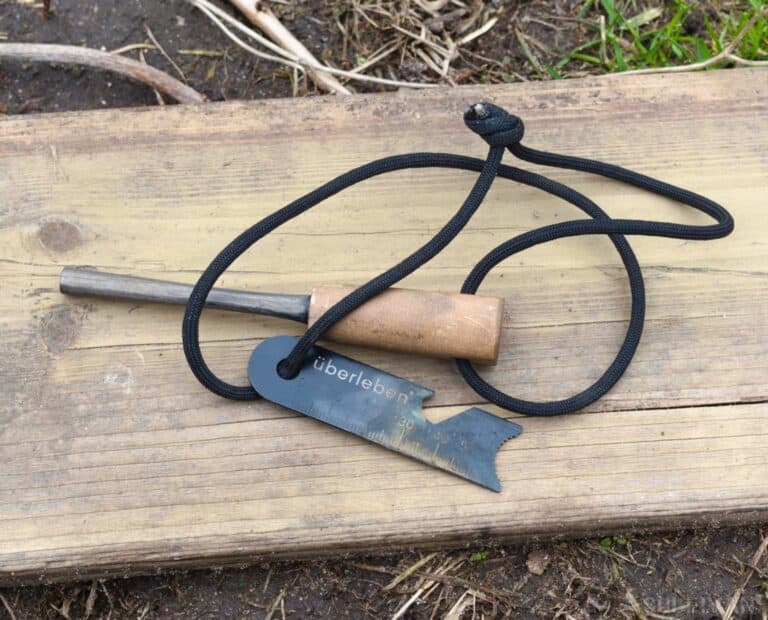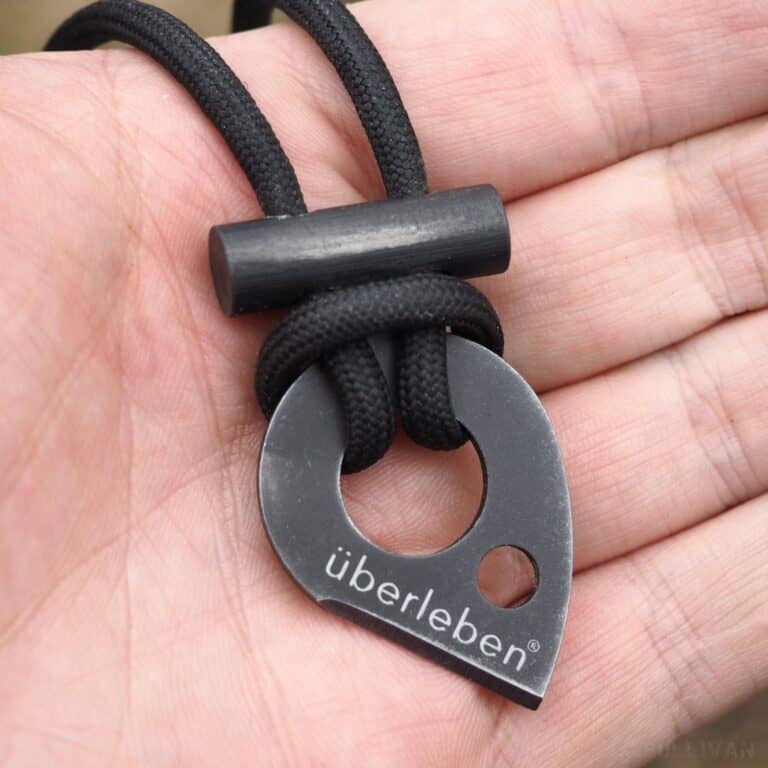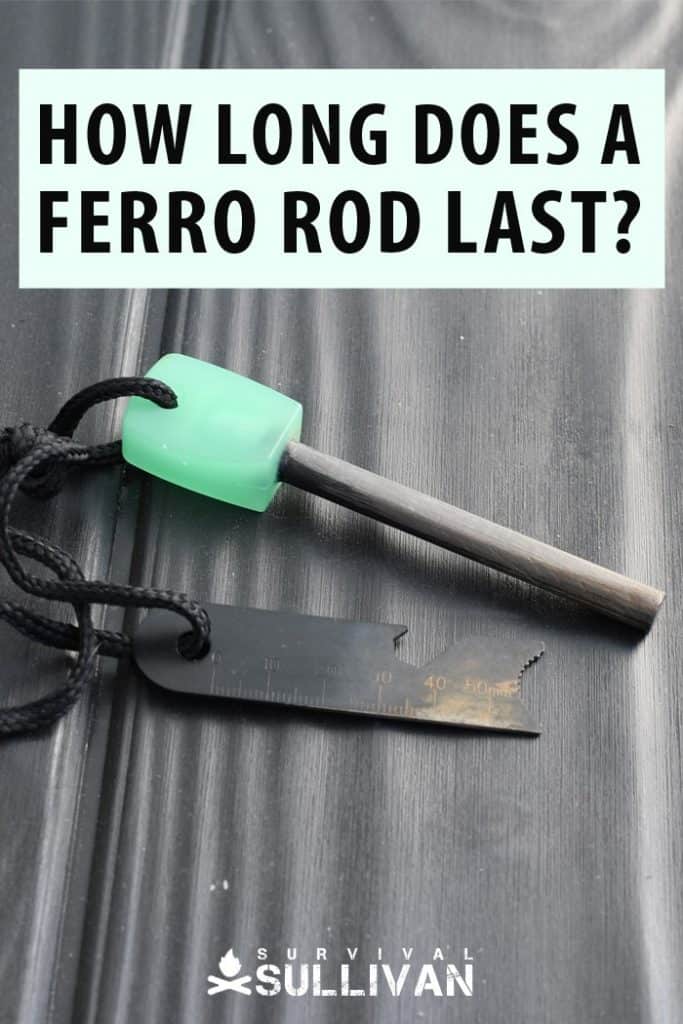Ferro rods are nearly ubiquitous among preppers and outdoorsmen, and feature prominently in all kinds of DIY and off-the-shelf survival kits.

These compact metallic rods along with their equally small strikers are capable of producing a shower of sparks in any weather conditions, perfect for fire starting in austere environments.
Considering they have no fuel to run out and no parts to break or malfunction, many preppers seem to think that these ingenious devices last forever.
But do they? Considering their importance for surviving out in the wild, it is good to know just how long a ferro rod lasts.
Your typical ferro rod will last between 8,000 and 12,000 strikes, depending on the diameter of the rod, the frequency of use, the softness or hardness of the alloy, and the skill of the user.
Smaller diameter, softer ferro rods used by untrained users may produce far less than 8,000 strikes before being consumed.
Larger, thicker ferro rods made from harder alloy employed by a skilled user may produce in excess of 20,000 strikes before wearing out.
While there is no precise formula for determining how long your particular ferro rod will last, you can learn to assess and understand the variables involved to come up with an educated guess.

I Thought Ferro Rods Were Just a Piece of Steel?
Not exactly. A ferro rod is made from ferrocerium, a synthetic alloy that produces hot sparks when oxidized. It is the ferrocerium that lends a “ferro” rod its name.
The sparks generated by the ferro rod have to come from somewhere, and in this case, they come from the tiny shavings and particles that are broken off of the rod itself when it is struck by the striker.
When they are removed quickly, the friction generated is sufficient to ignite these small particles that turn into the brilliant, blazing sparks that set our tinder alight.
What this obviously means is that the ferro rod is slowly being whittled down, literally, with every use. It also stands to reason that the softer alloys will shed more material with each strike.
This produces a correspondingly large and brilliant shower of sparks for starting a fire, but consumes the ferro rod more rapidly.
The harder alloys will shed less material every time they are struck, and this results in smaller shower sparks, though less material consumed with every use.
Think of it this way: every shower of sparks produced by your ferro rod comes at a cost, and that cost is the lifespan of the rod itself.
Size Matters
The size of the ferro rod matters when determining its lifespan.
Most rods will range anywhere from 3/16 of an inch to 1/2 an inch in diameter, and come in corresponding lengths, but most of them are only a few inches long at most.
All other considerations equal, a ferro rod that is larger in diameter has more material to put at your disposal, meaning it will last longer under the same conditions and frequency of use. A smaller ferro rod may be even more convenient to carry but is consumed more quickly.
A small, narrow ferro rod that is made of a softer alloy can degrade noticeably quickly under prolonged use.

Skill as Always Makes the Difference
You should also not underestimate how important skill and confidence is in prolonging the life of Any Given ferro rod. An unskilled user needs far more strikes on the feral rod to get the same results, consuming more material.
Ultimately, they may strike too hard chomping off more of the ferro rod than is needed to get their fire going.
Compare this with a skilled user who is practiced and confident with their tool of choice, who needs one, perhaps two strikes max and will use just the right amount of force to minimize wasted material.
Building the skill to use a ferro rod correctly has another effect on this lifespan: if you’re practicing with your Ferro rod regularly, you’ll be striking it over and over again to build up the necessary muscle memory to do it in the dark and whether you are soaking wet or chilled to the bone.
Compared to a normal use schedule, practice can rapidly wear down even hardened ferro rods fast.
While most people are never in any danger of wearing out a ferro rod in practice alone you can significantly reduce its life through regimented practice.
Keep that in mind if you’re practicing with a ferro rod and putting it back in your kit; it may start out “low on gas” in an emergency!
Corrosion is Always the Enemy!
Ferro rods are made from a synthetic alloy as described above. This alloy is vulnerable to rust. If your Ferro rod gets wet, either from water or sweat off your body if it rides in your pocket all day, it will begin to corrode if not promptly cared for.
No one seems to have a scientific answer on how much and how fast corrosion will affect a ferro rod in regards to shortening its lifespan, but I can tell you from a mountain of anecdotal evidence that corrosion will drastically shorten its life and do so in short order if it is left untended.
Based on my conversations and experiences, ferro rods seem to be commonly overlooked when it comes time to do preventive maintenance for equipment that gets wet in the field.
Some preppers have related to me horror stories of their ferro rod literally crumbling away in their hands when they pulled it out to use it after it had, unknown to them, been put away wet.
Don’t let this happen to you! If your ferro rod gets wet, dry it promptly and thoroughly, and apply a very thin coat of oil if you can.
A Ferro Rod Will Last You a Lifetime
A quality ferro rod will produce, on average, anywhere from 8,000 to 12,000 strikes depending on a number of factors such as diameter, hardness of the alloy, and the skill of the user.
The lifespan of any ferro rod can be extended through skilled use and regular maintenance.


Tom Marlowe practically grew up with a gun in his hand, and has held all kinds of jobs in the gun industry: range safety, sales, instruction and consulting, Tom has the experience to help civilian shooters figure out what will work best for them.

Here in Florida, with our high humidity, I leave one of my ferro rods outside, in the rain and everything. I just use that one for practice so I leave it where I use it. It’s been outside for over 5 months with only surface corrosion. A scrape with the striker and the corrosion is gone, sparks on second strike. I didn’t dunk it in saltwater, so I can’t speak for that, but I can’t imagine that would cause it to “crumble away”, as the article says. Maybe if it was stored in plastic while wet, or wrapped in wet rags…
Anybody else have a different experience?